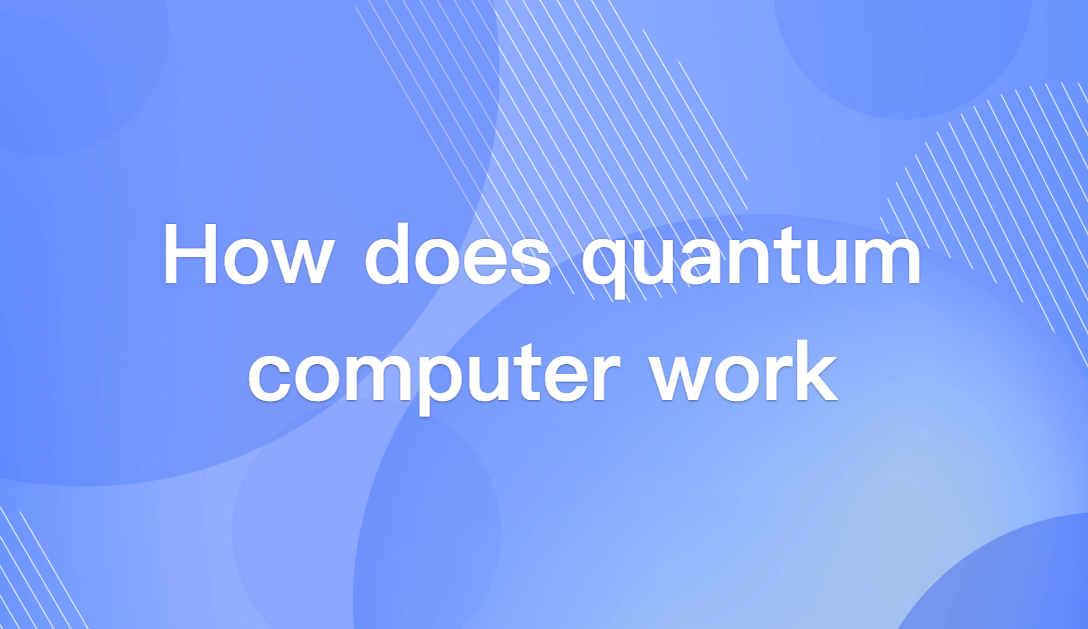How Does Quantum Computing Work? Superposition & Entanglement Demystified
Imagine a coin spinning in mid-air—you can't tell if it's heads or tails; it's stuck in a superposition of both states. This is where quantum computing kicks off: unlike traditional computers stuck with "0 or 1," quantum machines leverage qubit superposition and entanglement to achieve mind-blowing exponential speedups. In this piece, we'll zero in on exactly how quantum computing works and its nuts-and-bolts principles, breaking down the core logic in plain English so you walk away with a crystal-clear understanding of the whole process.

Qubits: The Building Blocks of Quantum Computing
A qubit is the smallest unit of information processing. Unlike classical bits—which can only be 0 or 1—a qubit uses quantum superposition to represent 0 and 1 at the same time. Picture that spinning coin again: before you measure it, it's neither heads nor tails but exists as a probability cloud, holding all possible states in parallel.
Why is superposition such a big deal? In classical computing, 3 bits can only show one of 8 states (like 000 or 001). But with 3 qubits in superposition, you get all 8 states simultaneously. That's what lets quantum computers chew through massive datasets in one go instead of grinding through them one by one.
| Characteristics | Classical Bit | Quantum Bit (Qubit) |
|---|---|---|
| State Representation | Either 0 or 1 (Deterministic) | Superposition (0 and 1 simultaneously) |
| Information Capacity | n bits store only 1 state | n qubits process 2ⁿ states in parallel |
| Working Principle | Electrical switch (0/1) | Quantum state superposition (probability amplitude superposition) |
Core Principles of Quantum Computing: The Power Duo of Superposition and Entanglement
Quantum computing doesn't run on just one trick—it's the dynamic combo of superposition and entanglement that makes the magic happen.
1. The Principle of Quantum Superposition
Superposition lets quantum computers explore tons of computational paths at once. Take searching a million data points: a classical computer has to check each one individually, but a quantum machine evaluates all possibilities in a single shot. Think of it like being in a maze and sending out a army of clones to try every path simultaneously—you'd nail the exit instantly. Superposition is the real-world physics behind this "clone army" effect.
2. The Principle of Quantum Entanglement
When qubits get entangled, their states lock together instantly, no matter how far apart they are. Tweak one, and the other reacts immediately (Einstein called this "spooky action at a distance"). In quantum computing, entanglement makes sure qubit groups work as a team: it encodes complex relationships across the system. For example, two entangled qubits in a state like |00⟩ + |11⟩ carry global info, not just individual bits. Without entanglement, superposition would be lonely parallel processing; with it, the system weaves scattered states into a tight-knit computational network.
How Quantum Computers Actually Work
1. Quantum Gates
Quantum gates use laser or microwave pulses to flip qubit states. For instance: the Hadamard gate turns |0⟩ into (|0⟩ + |1⟩)/√2, creating superposition; the CNOT gate flips a target qubit based on a control qubit, sparking entanglement. Unlike classical gates, quantum gates hit every part of a superposition at once—enabling true parallel computation.
2. The Computational Process
Check out the table below—it uses Grover's algorithm to walk through the full quantum computing workflow:
| Step | Physical Process | Principle Function | Key Point |
|---|---|---|---|
| Input | Problem encoded as quantum state | Initialize superposition | n qubits cover 2ⁿ possible solutions |
| Evolution | Quantum gate sequence operations | Parallel superposition evolution + entanglement synergy | Interference boosts probability of correct solution |
| Output | Measurement causes state collapse | Probabilistic result acquisition | High-probability paths collapse to correct answer |
3. Measurement Results: Getting the Final Answer Step by Step
Once the quantum algorithm wraps up all gate operations, the system sits in a superposition with a high chance of holding the right answer. Hit "measure," and all qubits instantly collapse together into classic 0s or 1s, spitting out a single bit string. But thanks to quantum mechanics' dice-roll nature, one measurement might flop (say, with a 0.9 probability amplitude for the correct solution, you've got an 81% shot at the right bit string). So in real-world use, you run the whole thing hundreds of times: log each bit string output after every run, then pick the one that shows up most often (like over 99% of the time) as your rock-solid answer
Conclusion: Back to the Basics
Quantum computing all boils down to two core ideas: superposition for parallel processing, and entanglement to keep states in sync. From initializing qubits to gate operations and that final measurement collapse—every step is pure quantum mechanics in action. Quantum computing isn't everywhere yet, but if you're curious, swing by our Quantum Cloud Platform